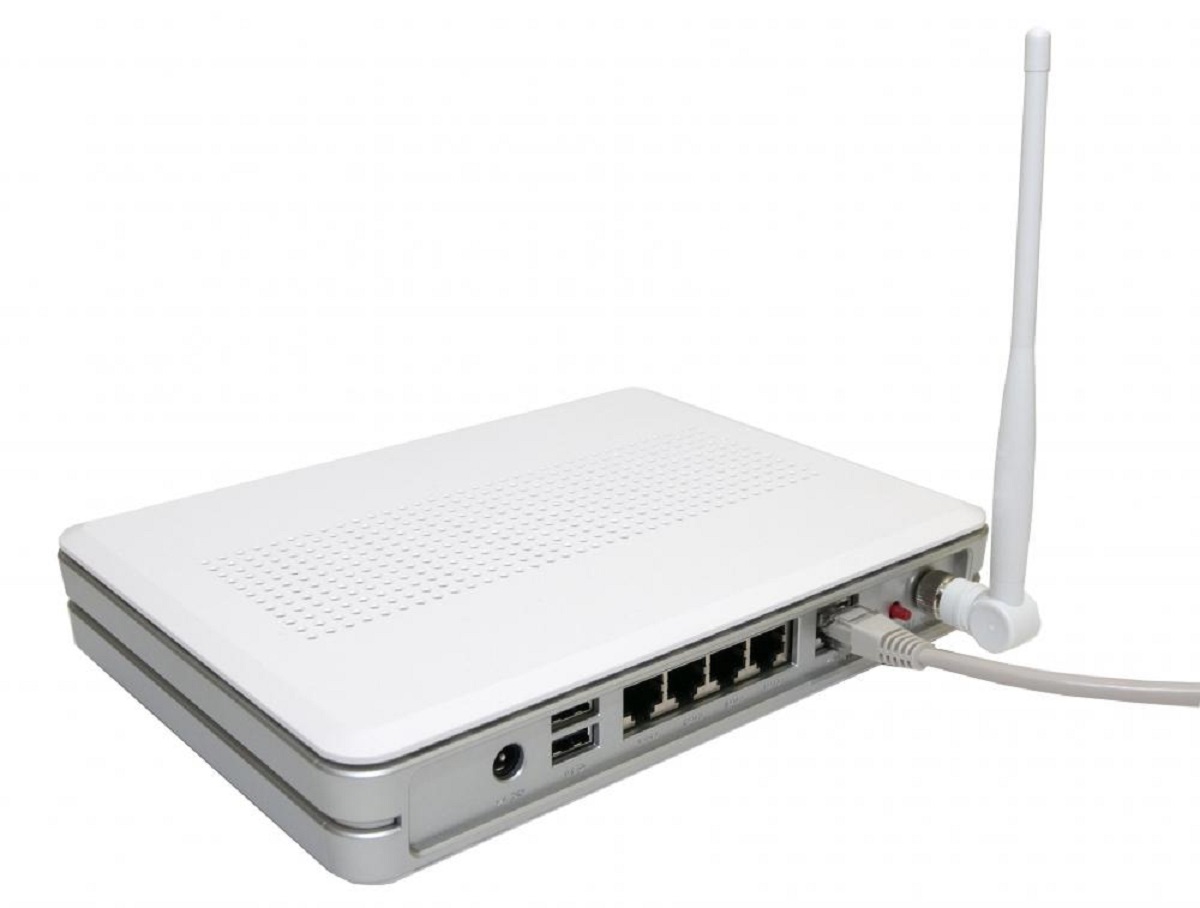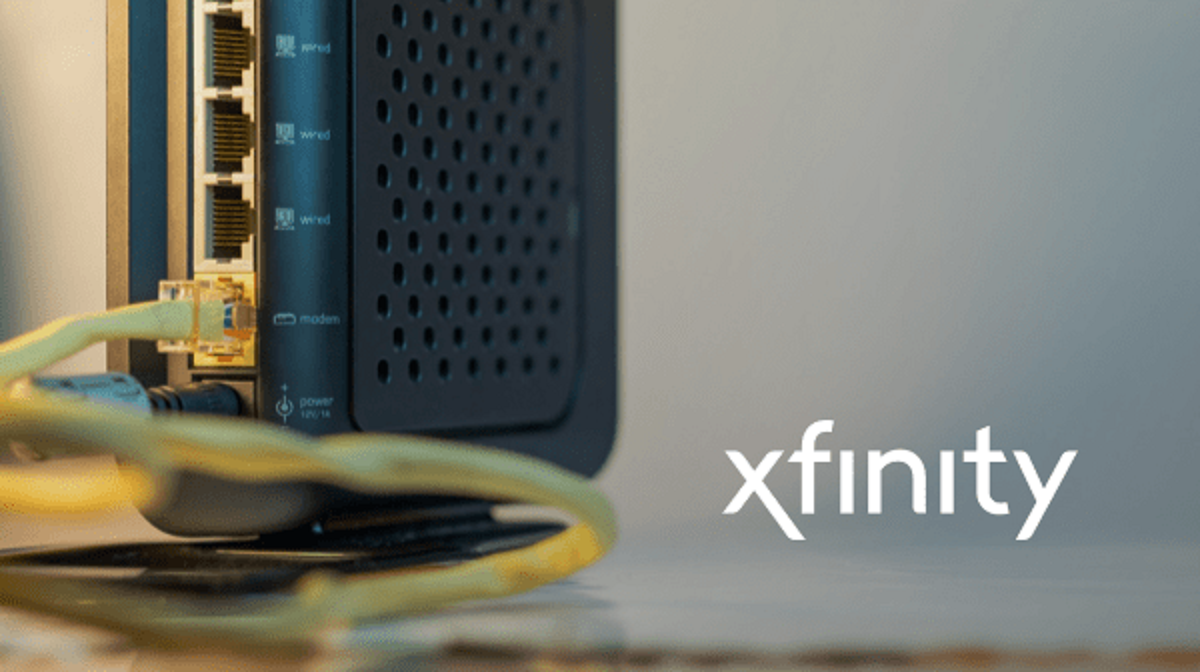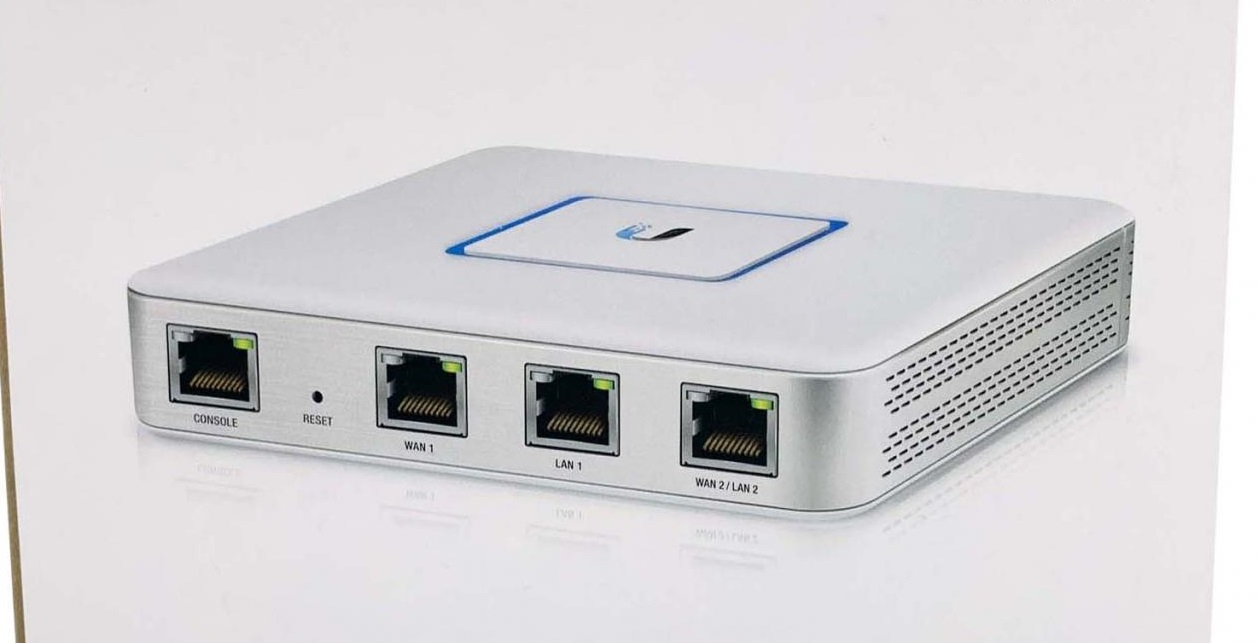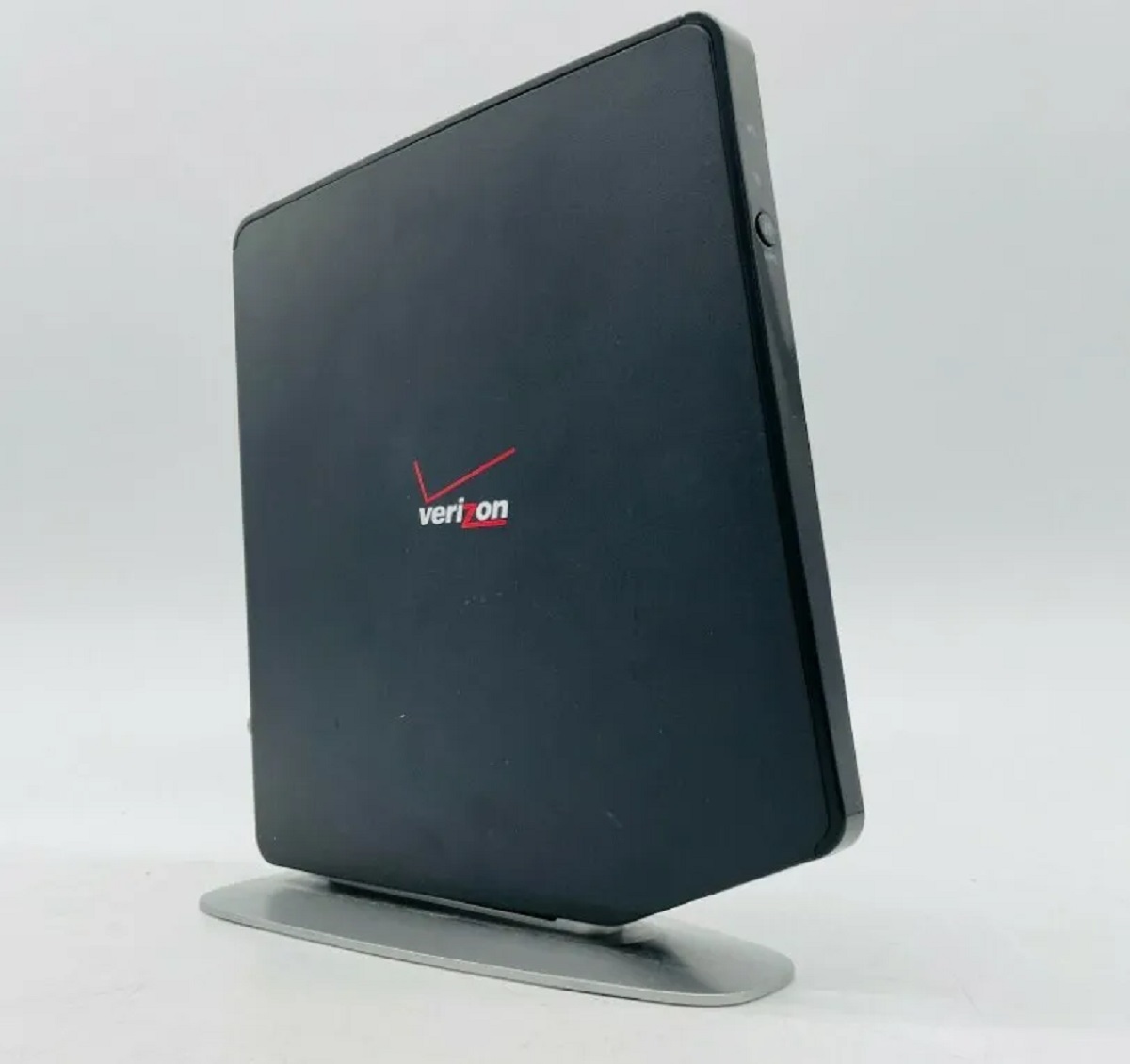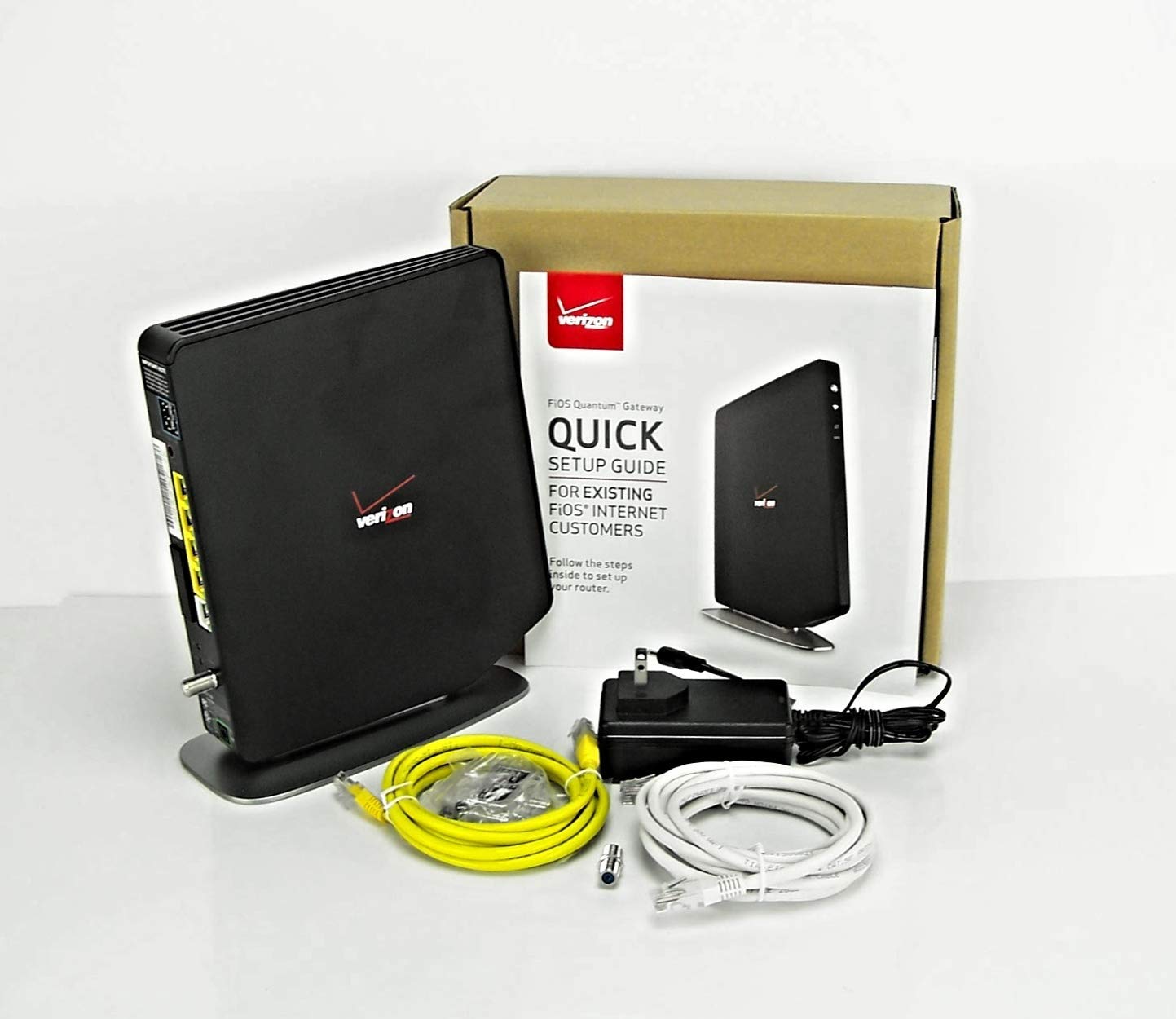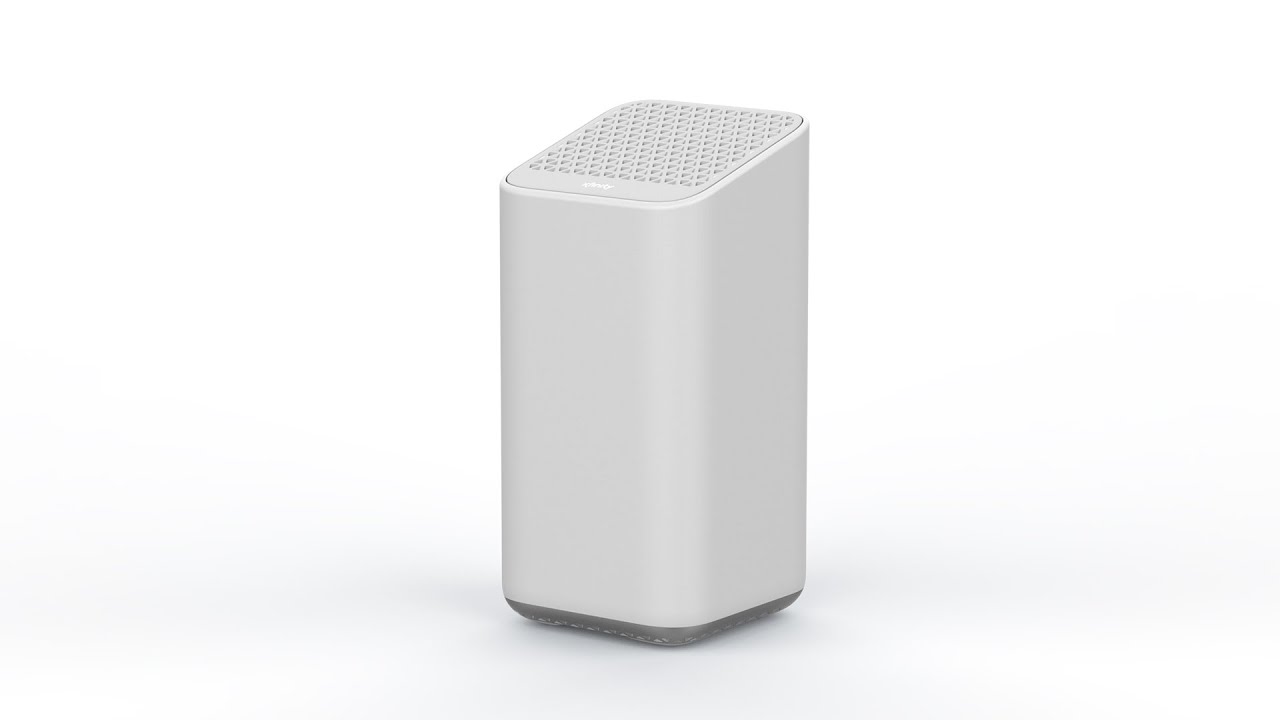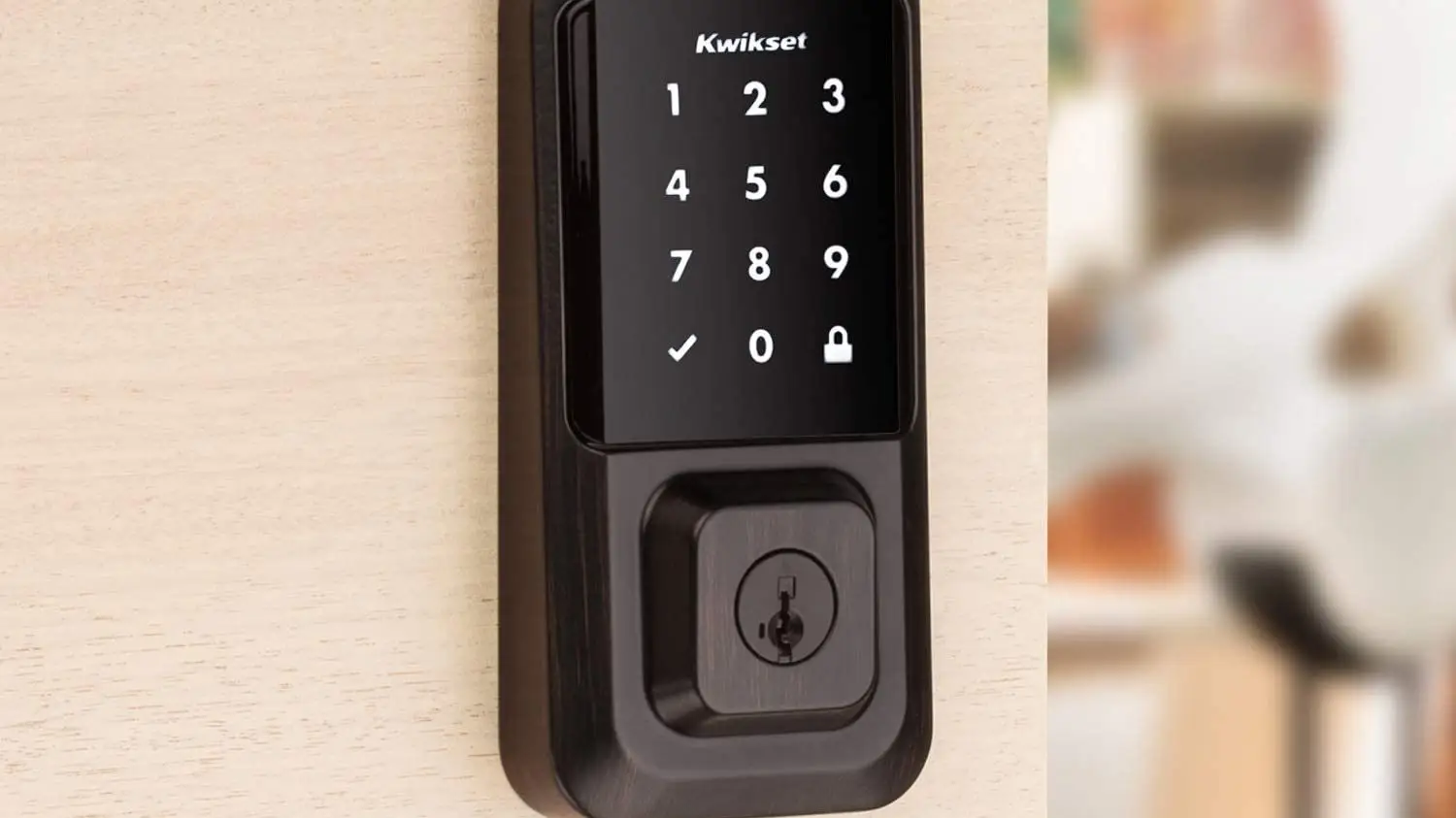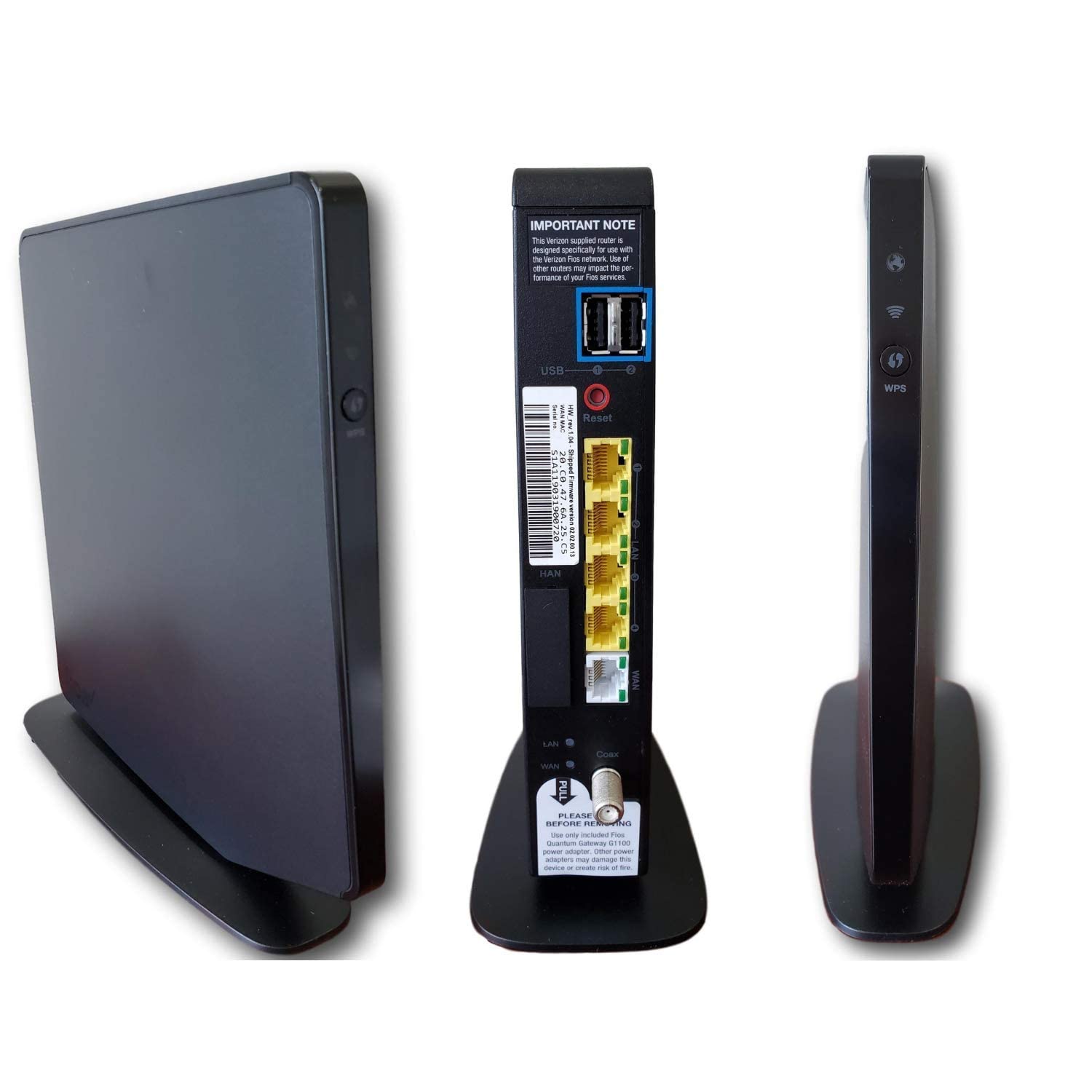Introduction
Welcome to the fast-paced world of technology, where staying connected has become an essential part of our daily lives. Whether it’s for work, entertainment, or simply staying in touch with loved ones, having a reliable and efficient internet connection is key. One of the key components that enable our devices to connect to the internet is a WiFi gateway.
A WiFi gateway acts as the doorway that allows multiple devices to connect to a local area network (LAN) and access the internet. It serves as the intermediary between your devices and the internet service provider (ISP), enabling wireless communication and data transmission.
In this article, we will delve into the world of WiFi gateways and explore how they work, the benefits they offer, the different types available, tips for choosing the right one for your needs, and troubleshooting common issues that may arise. So, let’s dive in and discover everything you need to know about WiFi gateways.
How does a WiFi gateway work, you may wonder? Well, let’s start by understanding the basic components that make up a WiFi gateway. At its core, a WiFi gateway combines the functionalities of a wireless access point (AP), a router, and a modem into a single device. This integration helps simplify the setup process and provides a seamless experience for users.
The modem component of the WiFi gateway connects to your ISP’s network and translates the incoming data signals to a format that your devices can understand. The router component, on the other hand, manages the traffic between devices within your local network and ensures that the data is delivered to the intended destination. Lastly, the wireless access point enables devices to connect wirelessly to the gateway and access the internet.
With a WiFi gateway in place, you can enjoy the convenience of connecting multiple devices simultaneously, such as smartphones, laptops, tablets, smart TVs, and more. Whether you’re streaming content, video conferencing, online gaming, or just browsing the web, a WiFi gateway provides the necessary connection for all your internet needs.
One of the key benefits of using a WiFi gateway is its ability to provide a secure and private network for your devices. WiFi gateways offer built-in security features, including firewalls, encryption protocols, and password protection, to safeguard your data and prevent unauthorized access.
Furthermore, WiFi gateways often come with advanced features such as parental controls, guest network access, and Quality of Service (QoS) settings, allowing you to customize and optimize your network according to your preferences and needs. These features help prioritize certain devices or applications, ensuring a smooth and efficient internet experience.
Now that we have covered the basics of WiFi gateways and their benefits, let’s explore the different types of WiFi gateways available in the market in our next section.
What is a WiFi Gateway?
A WiFi gateway is a device that acts as the central hub for connecting multiple devices to the internet. It combines the functionalities of a router, a modem, and a wireless access point into a single device, providing a seamless and convenient internet connection for all connected devices within a home or office network.
Think of the WiFi gateway as the bridge that connects your devices, such as smartphones, laptops, smart TVs, and gaming consoles, to the internet. It creates a local area network (LAN) within your home or office, allowing all devices to communicate with each other and access the internet.
The modem component of the WiFi gateway is responsible for connecting to your internet service provider (ISP) and translating the incoming data signals into a format that your devices can understand. It acts as the middleman between your devices and the internet, ensuring that the data packets are transmitted and received accurately.
The router component of the WiFi gateway manages the traffic within your network, directing data packets to the appropriate devices. It assigns unique IP addresses to each connected device, allowing them to communicate with each other and access the internet. The router also provides features such as firewall protection, port forwarding, and network address translation (NAT) to enhance the security and functionality of your network.
The wireless access point (AP) within the WiFi gateway enables devices to connect to the network wirelessly. It broadcasts the WiFi signal, allowing your devices to establish a wireless connection and access the internet without the need for physical cables.
WiFi gateways come in various forms, including standalone devices, or as part of a modem-router combo. Standalone devices offer the flexibility to choose a separate modem and router based on your specific requirements. Modem-router combo devices, on the other hand, provide an all-in-one solution, eliminating the need for two separate devices.
WiFi gateways utilize different WiFi standards, such as 802.11ac or the latest 802.11ax (also known as WiFi 6), to provide fast and reliable wireless connections. The WiFi standards determine the speed, range, and capacity of the wireless network, allowing for smoother and more efficient data transmission.
Overall, a WiFi gateway is an essential component of any modern home or office network. It provides a seamless and reliable internet connection, enables wireless connectivity, and enhances the security and functionality of your network. By understanding what a WiFi gateway is and how it works, you can make informed decisions when choosing the right device for your internet needs.
How does a WiFi Gateway work?
A WiFi gateway works by combining the functions of a modem, a router, and a wireless access point (AP) into a single device. Understanding how each component works together can help you grasp the functionality of a WiFi gateway.
The modem component of a WiFi gateway establishes a connection with your internet service provider (ISP). It receives data signals from your ISP and converts them into a format that can be understood by your devices. This process is essential as it allows your devices to communicate with the ISP and access the internet.
Once the modem establishes a connection with the ISP, the router component takes over. The router manages the traffic within your network by directing data packets to their intended destination. It assigns unique IP addresses to each connected device, allowing them to communicate with one another and with devices outside your network. The router also provides security features such as firewalls and network address translation (NAT) to protect your network from unauthorized access.
The wireless access point, or AP, enables devices to connect wirelessly to the WiFi gateway. It broadcasts the WiFi signal, allowing your devices to establish a wireless connection and access the internet without the need for physical cables. The WiFi signal emitted by the AP has a certain range, typically indicated by the number of antennas and the WiFi standard supported (e.g., 802.11ac or WiFi 6). The range determines how far the signal can reach and the strength of the connection.
When your devices connect to the WiFi gateway, they send and receive data packets over the network. These packets contain information such as web requests, email messages, and multimedia data. The WiFi gateway ensures that these packets are transmitted accurately and efficiently between your devices and the internet.
The WiFi gateway also handles network management tasks, such as assigning bandwidth priorities and managing network security settings. Through its user interface, you can configure settings, such as setting up a guest network, creating parental controls, or implementing quality of service (QoS) rules to prioritize specific devices or applications on your network.
Overall, the WiFi gateway acts as the central hub for your internet connection, providing a seamless and efficient way for your devices to access the internet. By integrating the functions of a modem, a router, and an access point, the WiFi gateway simplifies the setup process and enhances the connectivity and security of your network.
Benefits of a WiFi Gateway
A WiFi gateway offers numerous benefits, making it an essential device for connecting to the internet. Let’s explore some of the key advantages of using a WiFi gateway:
1. Multiple Device Connectivity: One of the primary benefits of a WiFi gateway is its ability to connect multiple devices simultaneously. Whether it’s smartphones, laptops, tablets, smart TVs, or IoT (Internet of Things) devices, a WiFi gateway ensures that all devices within your network can access the internet simultaneously.
2. Wireless Convenience: A WiFi gateway eliminates the need for physical cables, providing the convenience of wireless internet connectivity. You can connect your devices to the network without being restricted by the length of Ethernet cables or the location of your modem.
3. Seamless Internet Sharing: With a WiFi gateway, you can easily share your internet connection with family members, roommates, or colleagues. Everyone within the network can access the internet simultaneously from their respective devices, without the need for additional equipment or complicated configurations.
4. Flexible Network Coverage: WiFi gateways support wireless signals that can reach a wide area, allowing you to move around your home or office without losing internet connectivity. You can enjoy reliable internet access in different rooms and areas within your premises.
5. Enhanced Security: WiFi gateways come equipped with security features to protect your network from potential threats. These features include built-in firewalls, encryption protocols, and password protection. They help safeguard your data and prevent unauthorized access to your network.
6. Advanced Network Management: WiFi gateways often provide additional features for managing and optimizing your network. These features may include parental controls to manage internet usage for children, guest network access for visitors, and quality of service (QoS) settings to prioritize specific devices or applications for better performance.
7. Cost Efficiency: A WiFi gateway combines the functionalities of a modem and a router into a single device. By eliminating the need for separate devices, it saves you money on equipment costs and reduces clutter.
8. Easy Setup: WiFi gateways are designed for easy installation and setup. Most providers offer user-friendly interfaces or mobile apps that guide you through the setup process, making it simple for both tech-savvy individuals and those less familiar with networking.
9. Future-Proofing: WiFi gateways are constantly evolving to support the latest wireless standards, such as WiFi 6 (802.11ax), which provide faster speeds and better performance. Investing in a WiFi gateway ensures that your network remains compatible with future devices and technologies.
Overall, a WiFi gateway offers the convenience of wireless connectivity, the ability to connect multiple devices, enhanced security features, and easy network management. It provides a reliable and efficient internet connection for your home or office, enhancing your overall online experience without the limitations of a wired connection.
Types of WiFi Gateways
WiFi gateways come in various types, each offering different features and capabilities to suit different needs. Let’s explore some of the common types of WiFi gateways available in the market:
1. Standalone WiFi Gateways: These are individual devices that serve as a dedicated WiFi gateway. They offer flexibility in choosing a separate modem and router based on your specific requirements. Standalone WiFi gateways are ideal for users who want to have control over the specific features and capabilities of their modem and router.
2. Modem-Router Combo: A modem-router combo combines the functionalities of both a modem and a router into a single device. It simplifies the setup process and eliminates the need for two separate devices. Modem-router combos are suitable for users who want a straightforward and convenient solution without the hassle of managing multiple devices.
3. Wireless-N WiFi Gateways: These WiFi gateways support the 802.11n WiFi standard. While not the latest standard, Wireless-N gateways still offer reliable wireless connectivity and can provide decent speeds for everyday internet use. They are suitable for basic internet browsing, email, and video streaming.
4. Wireless-AC WiFi Gateways: WiFi gateways that support the 802.11ac WiFi standard offer faster speeds and improved performance compared to Wireless-N gateways. They are capable of handling more bandwidth-intensive tasks such as HD video streaming, online gaming, and large file transfers. Wireless-AC gateways are a good option for users who require a higher level of performance and have multiple devices connected simultaneously.
5. WiFi 6 (802.11ax) Gateways: WiFi gateways that support the latest WiFi 6 (802.11ax) standard offer significant improvements in speed, capacity, and overall network performance. WiFi 6 gateways utilize advanced technologies to handle multiple devices and high-bandwidth activities, making them ideal for homes or offices with numerous connected devices, such as smart home devices, gaming consoles, and 4K streaming.
6. Mesh WiFi Systems: Mesh WiFi systems consist of multiple WiFi routers or access points that work together to extend the WiFi coverage throughout a larger area. They create a mesh network, ensuring seamless connectivity as you move around your home or office. Mesh WiFi systems are suitable for larger spaces where a single WiFi gateway may not provide sufficient coverage.
7. Provider-Specific Gateways: Some internet service providers (ISPs) offer their own WiFi gateways specifically designed for their services. These gateways are often pre-configured for easy setup and compatibility with their network. While they may lack some advanced features, they provide a hassle-free option for users who prefer a simple solution directly from their ISP.
When choosing a WiFi gateway, consider factors such as your internet requirements, the number of devices that need to be connected, the size of the area you want to cover, and the desired level of control and customization. Understanding the different types of WiFi gateways available will help you make an informed decision that meets your specific needs.
Choosing the Right WiFi Gateway for Your Needs
When selecting a WiFi gateway, it’s important to consider your specific requirements to ensure that you choose a device that fulfills your needs. Here are some factors to consider when choosing the right WiFi gateway:
1. Internet Speed: Determine the internet speed offered by your ISP and select a WiFi gateway that can handle that speed. Look for a device that supports the appropriate WiFi standard (such as WiFi 6) for faster speeds and better performance.
2. Number of Connected Devices: Consider the number of devices that will be connected to your network simultaneously. If you have multiple devices, choose a WiFi gateway that can handle the capacity and offer good performance with multiple connections.
3. WiFi Range: Assess the size of the area you want to cover with your WiFi signal. If you have a larger home or office space, consider a WiFi gateway with multiple antennas or a mesh WiFi system to ensure consistent coverage throughout the entire area.
4. Security Features: Look for a WiFi gateway with robust security features, including encryption protocols, firewalls, and guest network options. These features help protect your network from unau
Setting up a WiFi Gateway
Setting up a WiFi gateway may vary slightly depending on the specific model and brand you have. However, the general steps for setting up a WiFi gateway are as follows:
1. Gather Your Equipment: Ensure you have all the necessary equipment, including the WiFi gateway, power adapter, Ethernet cables, and any other accessories provided with your device.
2. Choose the Right Location: Select a central location for your WiFi gateway. It should be placed in an open area away from obstructions, such as walls or large objects, to allow for optimal signal coverage.
3. Connect the Modem: Use an Ethernet cable to connect the modem’s Ethernet port to the WAN or Internet port on the WiFi gateway. This connection will establish the link between your ISP’s network and the WiFi gateway.
4. Power Up the Gateway: Plug the power adapter into an electrical outlet and connect it to the WiFi gateway. Wait for the device to power up and initialize.
5. Connect to the Gateway: On your computer or mobile device, go to the network settings and select the WiFi network name (SSID) of the gateway. Enter the default password provided with the gateway to connect to the network.
6. Access the Gateway’s Configuration Page: Open a web browser and enter the default gateway IP address (e.g., 192.168.1.1) in the address bar. This will redirect you to the configuration page of the WiFi gateway.
7. Configure Network Settings: Follow the on-screen instructions to configure the network settings, including setting up a new username/password, WiFi network name (SSID), and WiFi password. You may also have the option to enable additional features, such as guest network access or parental controls. Make sure to save the changes once you have completed the configuration.
8. Connect Your Devices: After configuring the network settings, reconnect your devices to the new WiFi network using the updated WiFi name (SSID) and password. Ensure that each device is connected properly and is able to access the internet.
9. Test the Network: Perform a quick test by browsing the internet, streaming content, or accessing your email to ensure that the WiFi gateway is providing a stable and reliable connection.
It’s important to note that the setup process may differ slightly depending on your WiFi gateway model and its specific features. It’s always recommended to consult the user manual or manufacturer’s website for detailed instructions tailored to your device.
By following these steps, you should be able to set up your WiFi gateway and enjoy a seamless and reliable internet connection for all your connected devices.
Troubleshooting Common Issues with WiFi Gateways
While WiFi gateways are designed to provide a seamless internet connection, occasional issues may arise. Here are some common issues you may encounter with a WiFi gateway, along with troubleshooting steps to resolve them:
1. Weak or Inconsistent WiFi Signal: If you’re experiencing a weak WiFi signal or inconsistent connectivity, try relocating the WiFi gateway to a more centralized location. Ensure that there are no physical obstructions, such as walls or large objects, blocking the signal. You can also consider using a WiFi range extender to extend the reach of your WiFi signal.
2. Slow Internet Speed: If your internet speed seems slower than expected, check that your WiFi gateway’s firmware is up to date by logging into the gateway’s configuration page. Also, ensure that there are no bandwidth-intensive applications or devices running in the background that might be consuming a large portion of your internet speed.
3. Intermittent Signal Drops: If your WiFi signal drops intermittently, ensure that your WiFi gateway’s firmware is updated. Additionally, try changing the WiFi channel on your gateway’s configuration page to avoid interference from neighboring WiFi networks. Resetting the gateway to its factory default settings and reconfiguring it can also help resolve intermittent signal drops.
4. Device Connection Issues: If a specific device is having trouble connecting to the WiFi network, ensure that the device’s WiFi is turned on and that it is entering the correct WiFi network name (SSID) and password. If the problem persists, try forgetting the network on the device and reconnecting to it. You may also need to check if the device’s network drivers are up to date.
5. Unable to Access Configuration Page: If you’re having trouble accessing the configuration page of your WiFi gateway, ensure that you are using the correct gateway IP address. Try using a different web browser or clearing your browser’s cache. If the issue persists, resetting the gateway to its factory default settings should reset any configuration issues.
6. Network Security Concerns: If you’re worried about network security, ensure that your WiFi gateway’s firmware is up to date, as updates often include security patches. Change the default administrator username and password to a strong, unique combination. Enable encryption, such as WPA2, on your WiFi network to secure the data transmitted over the network.
7. Incompatibility with Devices: If you’re experiencing compatibility issues with certain devices, check that those devices are compatible with your WiFi gateway’s supported WiFi standards. Some older devices may not support the latest WiFi standards, so connecting them to a lower frequency band on the gateway, such as 2.4GHz, might help.
8. Unresponsive Gateway: If your WiFi gateway becomes unresponsive or stops functioning, try power cycling the device by unplugging it from the power source, waiting for a few seconds, and plugging it back in. If the issue persists, a factory reset may be necessary, which will revert the gateway to its default settings. Consult your gateway’s user manual or manufacturer’s website for specific instructions on how to perform a factory reset.
If you continue experiencing issues with your WiFi gateway, it is recommended to contact your internet service provider (ISP) or the manufacturer’s customer support for further assistance. They can provide specific troubleshooting steps tailored to your WiFi gateway model and help resolve any persistent issues you may encounter.
Conclusion
WiFi gateways play a crucial role in providing a seamless and reliable internet connection for a wide range of devices. Whether it’s for work, entertainment, education, or communication, a WiFi gateway allows us to stay connected in today’s digital world.
In this article, we’ve explored the fundamentals of WiFi gateways, understanding what they are and how they work. We’ve discovered the benefits they offer, including multiple device connectivity, wireless convenience, enhanced security, and advanced network management capabilities.
We’ve also discussed the different types of WiFi gateways available, such as standalone devices, modem-router combos, and mesh WiFi systems. Each type has its own unique features and advantages, allowing you to choose the one that best suits your individual needs.
Additionally, we’ve touched on the important aspects to consider when selecting a WiFi gateway, including internet speed, number of connected devices, WiFi range, and security features. These factors are crucial to ensure that you choose a WiFi gateway that meets your specific requirements and provides the desired performance and functionality.
Lastly, we’ve provided troubleshooting tips for common issues that may arise with WiFi gateways. By following these troubleshooting steps, you can address problems such as weak WiFi signals, slow internet speeds, device connection issues, and more, to maintain a consistent and reliable internet connection.
Remember, while WiFi gateways are designed to provide convenience and connectivity, occasional issues may arise. It’s important to stay informed about troubleshooting techniques and rely on the resources available from your internet service provider (ISP) and the manufacturer of your WiFi gateway for further assistance when needed.
By understanding the ins and outs of WiFi gateways and effectively troubleshooting any issues that arise, you can ensure a seamless and enjoyable online experience for all your connected devices. So, invest in the right WiFi gateway, set it up properly, and overcome any challenges that come your way to enjoy reliable and convenient internet connectivity. Stay connected, stay empowered!







